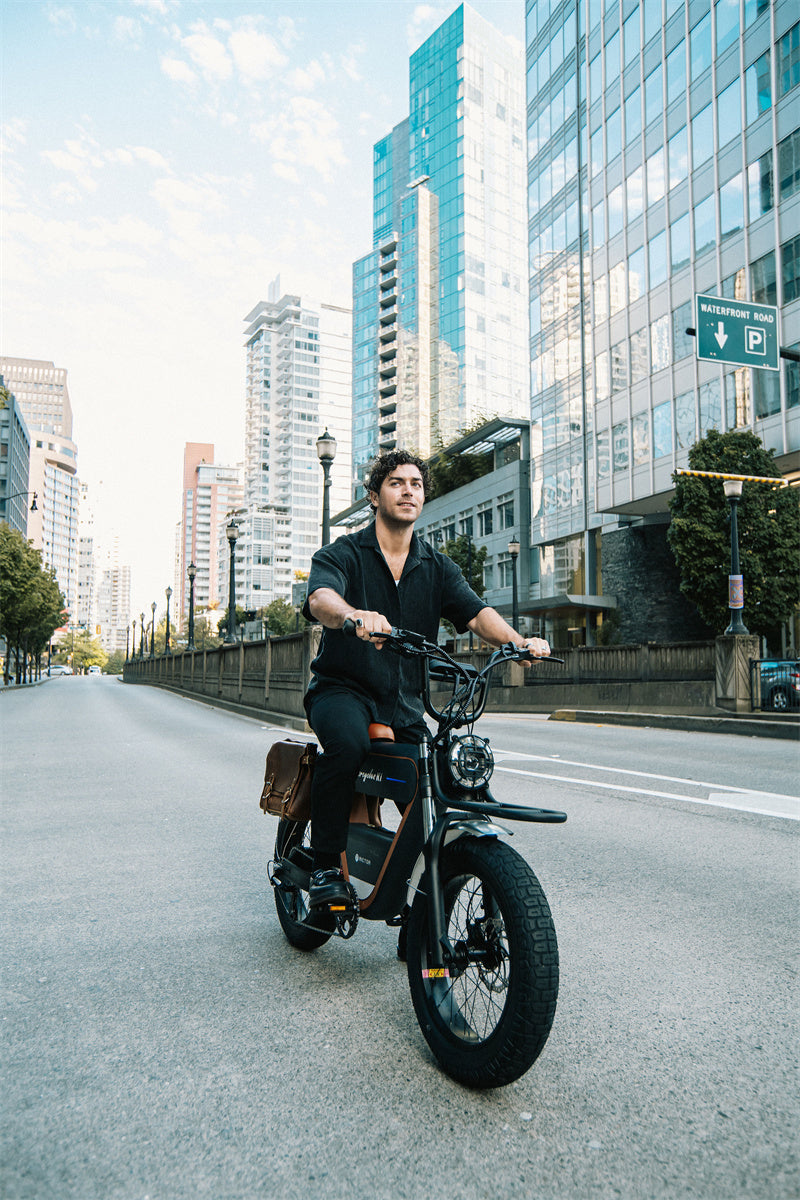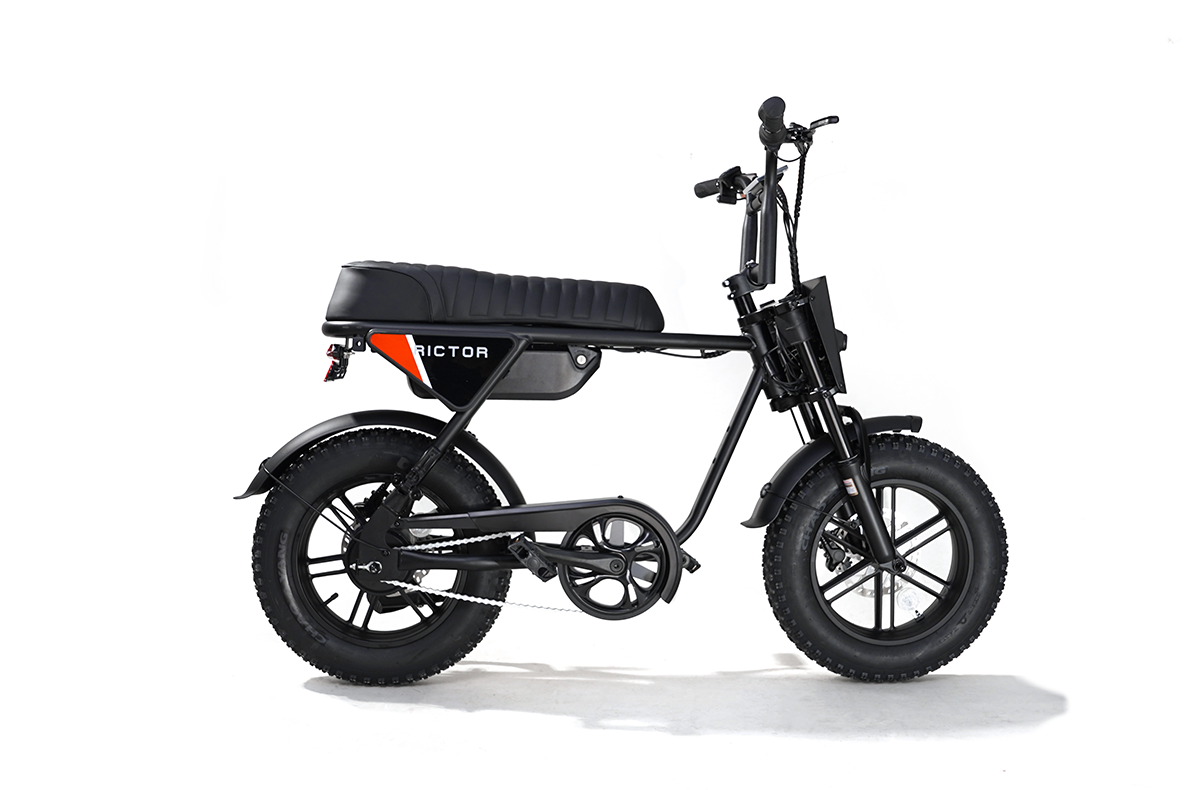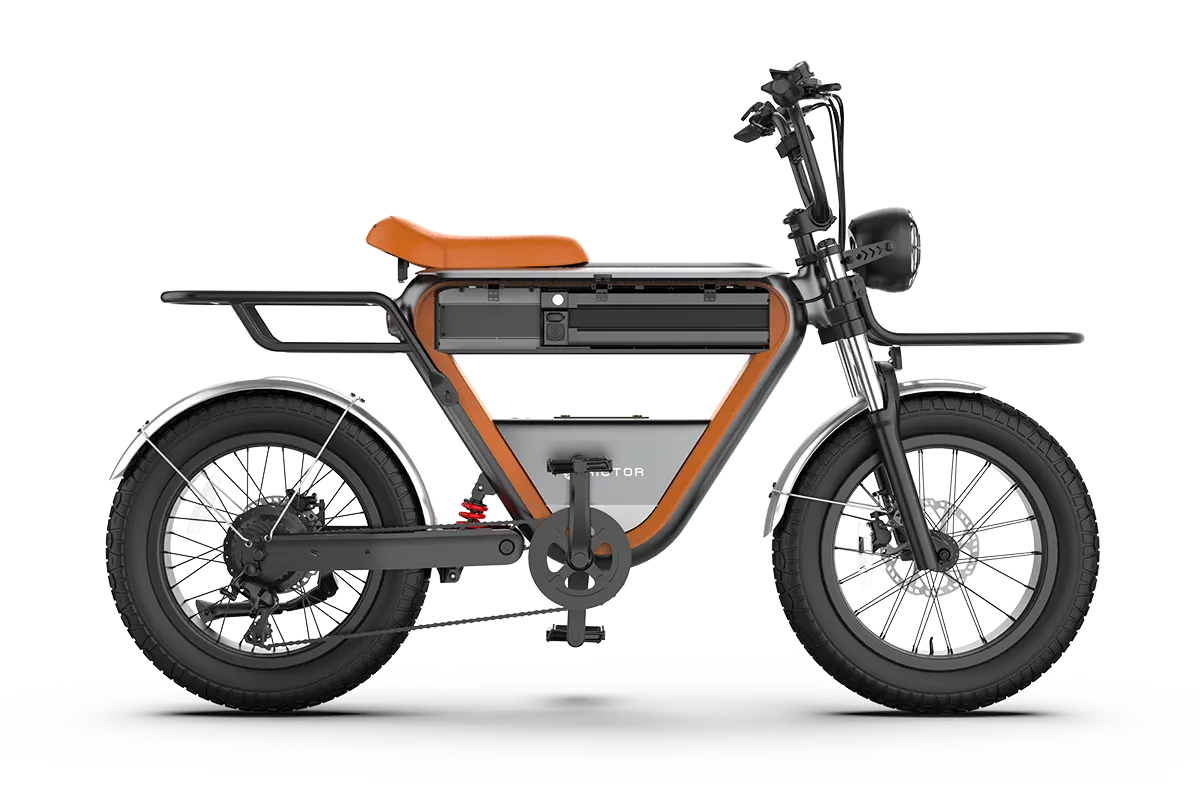
How to Choose the Most Reliable Electric Bike for Your Needs
So, you're looking for an electric bike to handle your daily commute—something that’s reliable, straightforward, and doesn’t break down on you.
No flashy extras, no cheap shortcuts, just a solid ride that you can count on.
In this guide, we’ll dive into what makes an electric bike truly reliable, covering the essentials you should look for to ensure you pick one that’ll keep up with your daily commute.
From battery life to build quality and everything in between, here’s everything you need to know to find the "Toyota of electric bikes"
Most Reliable Brand = Most Reliable Electric Bike?
Electric bikes are blowing up in popularity across the U.S., and with that boom, tons of brands have popped up.
You’ve got everything from big-name companies to fresh startups, all promising that their electric bicycles are the best, most reliable option out there. But how do you know which brands actually deliver on that promise?
Here’s where it gets a bit tricky: just because a brand is popular doesn’t mean every bike they make is equally reliable. Sometimes, marketing can make a brand seem more trustworthy than it really is.
If you’re brand new to electric bikes and you’ve got a decent budget, starting with a well-known brand can be a safe bet.
Trek – Known for its sturdy builds and reliable performance, Trek offers a range of commuter-friendly e-bikes that prioritize durability and comfort. Their bikes are built to last and handle daily wear and tear, making them a great choice for newcomers.
Specialized – This brand brings high-quality components and great ride experiences. Specialized models often feature powerful motors and long-lasting batteries, making them dependable for daily use. They’re a little pricier, but the quality often justifies the cost.
Rad Power Bikes – If you’re looking for something affordable without compromising too much on quality, Rad Power Bikes is worth a look. Known for accessible pricing and reliable designs, Rad Power offers commuter models that are both practical and easy to maintain.
RICTOR – If you're after a blend of vintage style and uncompromising quality, RICTOR is a standout choice. This brand is dedicated to high-quality craftsmanship and durable design.
SEE ALSO What You Gotta Know Before Buying An Electric Bike
What You Should Really Look for in an Electric Bike
Battery
If you’ve read the news, you’ve probably seen some alarming stories about electric bike battery fires.
Safety should be at the top of your list when choosing an E-bike, and one of the best ways to ensure that is by looking for a bike with a UL-certified battery.
When checking out the battery on an electric bike, you’ll usually see specs like voltage (V) and amp hours (Ah) printed near it.
These numbers might seem technical, but they’re important in understanding how much power and range the battery provides.
Together, they give you watt-hours (Wh), which is the total amount of energy the battery can store. You can calculate Wh by multiplying voltage by amp hours (Wh = V x Ah).
For most everyday commutes, a battery with 400-500Wh is often enough to get you around without stressing about recharging constantly.
If you have a longer commute or plan on doing more than just city riding, you might want to look for something around 600Wh or higher.
Torque
Torque is all about the force that pushes the bike forward.
It’s the motor’s power that helps you get up to speed and handle different terrains.
Torque is measured in newton-meters (Nm), and the higher the torque, the more force the motor can apply to help you accelerate and tackle inclines.
On flat roads, you may not need a lot of torque to keep moving comfortably.
However, when you’re starting from a complete stop or heading uphill, torque plays a crucial role.
Higher torque means your e-bike can handle these situations smoothly without putting extra strain on the motor or draining the battery too quickly.
It’s especially useful if your commute involves hills or you often carry extra weight, like bags or groceries.
For everyday city commuting, around 40-50Nm of torque is usually sufficient, providing steady acceleration and an easy ride on flat surfaces.
But if your route includes steeper inclines or you want quicker acceleration, look for a motor with 60-80Nm of torque. The Rictor K1 delivers up to 85Nm of torque.
Motor Types
The motor is a huge part of the ride experience.
Hub Motors
Most entry-level and commuter e-bikes come with a hub motor, which is located either in the front or rear wheel.
This type of motor is pretty straightforward—it directly powers the wheel it’s mounted on. Hub motors are known for being affordable, low-maintenance, and reliable for everyday use.
They’re great for flat, city riding, where you just need a steady assist without a lot of extra power.
They don’t handle hills as well as other options. Because they don’t work directly with the bike’s gears, they can feel a bit underpowered on steep climbs.
Mid Drive Motors
Then there’s the mid-drive motor, which sits near the pedals at the bike’s center.
This type of motor is more advanced and typically found on higher-end e-bikes.
What makes mid-drive motors different is that they work with the bike’s gears, much like the way a car’s transmission works. This setup gives you more torque and allows the motor to perform efficiently, especially on hills or rough terrain.
If your ride involves a lot of climbing or off-road paths, a mid-drive motor is the way to go. Mid-drive motors also help balance the weight of the bike since they’re centered, which can make the bike feel more stable and easier to handle.
Within the hub motor category, you’ll also see geared and gearless (direct drive) options.
Geared hub motors have internal gears that allow them to provide better torque at low speeds, making them ideal for stop-and-go city riding and moderate hills.
They’re compact and lightweight, but the gears can wear out over time, meaning a bit more maintenance.
Other Key Details
A strong frame made from aluminum or steel is key for handling everyday bumps and rougher paths without wearing down quickly.
Comfort is also huge—look for bikes with ergonomic grips, a comfy seat, and maybe some suspension if your ride gets bumpy.
Quality components from trusted brands, like Shimano gears or Tektro brakes, mean less maintenance and a longer-lasting bike.
And if you’re riding in all kinds of weather, make sure the bike has water-resistant features, like sealed parts and protective fenders, to keep it running smoothly.
Finally, a solid warranty and good customer support can be a lifesaver if any issues come up, so you’re covered long after the purchase.
Rictor K1: A Reliable E-Bike Packed with Smart Features
Newer electric bike brands often face a bit of skepticism—not necessarily because they’re unreliable, but because it’s harder to know what’s under the hood without diving deep into the specs. You might find yourself researching every detail: What components are they using? How sturdy is the build? Is it really made to last? With the Rictor K1, those questions are answered right upfront.
-
High-Strength Frame: Built with advanced liquid forging technology, the frame is incredibly durable, designed to handle the daily bumps and challenges of city and off-road riding.
-
Shimano 7-Speed Gear System: The trusted Shimano 7-speed system provides smooth, reliable shifting across various terrains.
-
Bafang 750W Hub Motor: This powerful motor delivers impressive performance for faster rides and excellent hill-climbing capability.
-
IPX7 Waterproof Rating: Core components, including the motor and battery, have an IPX7 waterproof rating, protecting the bike from water exposure in all weather conditions.
-
Smart Riding Features: Equipped with an intuitive app that tracks your routes, mileage, ride duration, and max speed.
FAQs
What makes an electric bike reliable?
A reliable electric bike combines a durable frame, quality components, a UL-certified battery, and a motor with sufficient torque. These features help ensure longevity, performance, and safety, making it easier to maintain over time.
How important is battery certification for an electric bike?
Very important! A UL-certified battery has undergone safety testing, minimizing risks of overheating or fire. Certification helps ensure a safer, longer-lasting battery, which is essential for reliable daily use.
What type of motor is best for city commuting?
For city commuting, a hub motor is often sufficient as it provides steady power on flat surfaces. If your route includes hills, a mid-drive motor might be a better choice since it works with the gears, providing extra torque and efficiency on inclines.




